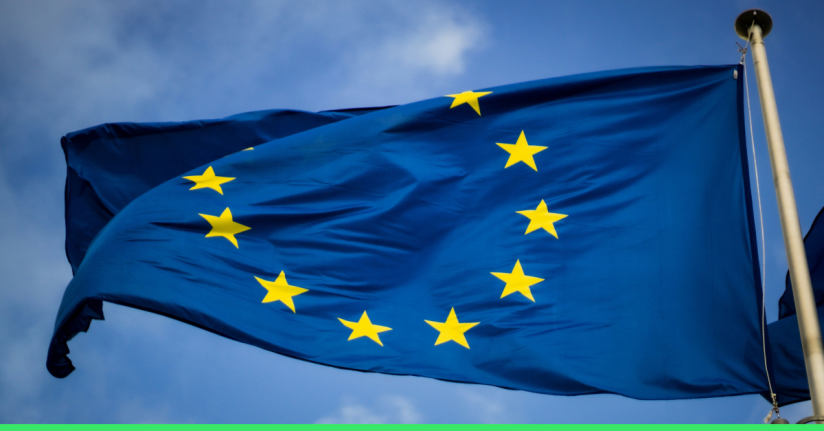
Part of a series of articles from our new whitepaper: The reference data revolution: How firms can leapfrog legacy technology
Part of a series of articles from our new whitepaper: The reference data revolution: How firms can leapfrog legacy technology
How can firms leapfrog legacy technology systems when it comes to market reference data? And why do data and workflow need to go hand in hand in order to give firms that edge in capital markets in the years ahead? These topics are linked by the broader theme of digital transformation and its acceleration as a result of the pandemic. In this blog, we look at how Euromoney TRADEDATA started on its digital transformation journey and what others can learn from our approach.
Companies’ Digital Transformation Hurdles
One of the biggest hurdles companies face when it comes to digital transformation is the assumption that it is going to require major change management programmes. But is this always the case? Often the answer to this question depends on the scale of legacy and technical debt you have as a company throughout your operation and what reliance should you place on those various components.
Balancing Security Versus Risk
Change management skills are core for any business to master, whether that is applied to human resources or to technology resources. Businesses like Euromoney TRADEDATA hold a particular position of trust in the industry. With that trust comes the integrity needed to balance the security of potential data services against the risk of innovation. The benefit comes in developing enhanced services that will resolve ever more granular pain points for our clients. But any sort of change always creates some level of risk. Much of our recent innovation was born initially out of a risk assessment and the need to remove the physical risk - the On Premise risk - to the business. That's what triggered our initial migration to the cloud.
The accelerating adoption of cloud is an interesting case study. Even in 2019, there were some reservations from the industry about moving sensitive, confidential information. Since then, cloud service providers have stepped up in terms of their understanding of the perception of security risk, and in some cases, actual risk. And those services have evolved in parallel to the journey that trade data has had. The industry has taken advantage of that and is now much more prepared. The pandemic forced all of us to look at cloud-based solutions from the start. But that approach also requires a change of habits and long-held working practices.
Different Types of Data Access in the Post Pandemic World
There is a degree of polarisation in financial institutions’ reactions - are they just going to revert to pre-pandemic operations but with small improvements (which have certainly been delivered in technology, not the least through video and collaboration tools) or are they going to look to take advantage of this change in a more fundamental way?
This divide will be really interesting to monitor to see whether any competitive advantages come out of this and whether service levels are improved or not. We now have a bifurcation of responses to the post-pandemic world. But, most importantly, what has changed is that the enabling technology to achieve pretty much anything you want remotely has been delivered and continues to be improved. All of this digital transformation discussion would not have been possible 18 months ago without the technology to actually support collaborative remote working.
When we looked at what we needed as a business to be able to tackle second and third tier marketplaces, we realised there were two key requirements. One was to increase and further develop partnerships with intermediaries in the shape of platforms, and delivery of service propositions. But we also needed workflow products and personal workflow products. The typical contract for service with larger clients is for a multiplicity of services and global geographies. Clients required granular data and different types of access to that data - and potentially different commercial models to support that. Looking at the personal workflow products going from using a secure FTP service at the top end of the Tier One clients right down to using an Excel add-in at the bottom end was a major leap forward. Something as simple as the enablement of an Excel add-in allowed businesses to access data at a relatively low entry point.
Real-Time Reference Data Access
We looked at what else we could do on the personal workflow front. We wanted to be ahead of the trend towards on demand payment for use of products or services. This trend, which already exists in consumer services, is having an overspill effect on corporate business. Much of the underlying tech applied to business originates from the transactional needs of the public consumer at scale. The coordination of training elements that need to be assembled and ready in a real-time environment is actually being driven by the same demand. But in reality, only a relatively small proportion of reference data is impacted and only in near real-time. So the need to be able to access reference data in real time is true but it's more of an availability play, rather than reducing the latency of the market in how it produces that reference data. One of our challenges and the reason we started partnering with innovative startups such as ipushpull was a need to understand what ‘on demand’ meant and what commercial models we would need to support that, and also whether it was a risk to our existing business.
Building an Intrapreneurial Approach to Change Management
Firms who are looking to partner with agile startups, which have their finger on the pulse of technology, need to evaluate what their success criteria are and also how to budget for this type of activity. In a way, it has been natural for Euromoney TRADEDATA to undertake this process of intrapreneurship because for much of our existence we operated almost as a kind of startup, sitting under the overall Euromoney umbrella. Given that startup spirit we had deployed in developing our own business, we have a lot in common with the startup world and a shared mentality that helps us work alongside other entrepreneurs more readily.
System and Trading Platforms
When you're looking at intrapreneurship, it all depends on the scale of the problem that faces you. Systems and trading platforms are built up over many, many years and some of it creates a legacy that you can't really ever get rid of. You cannot ever start from scratch so the best you can do is build on what you already have. You have to break down the problem into its smallest parts and then begin to reconnect the dots using new technologies. That means starting from a small-scale focus with best-in-breed components.
Different Components of a Trading Platform
There is a methodology called strangler pattern, which looks at key data flows that move around the various different components of your trading system, and support systems to trading. If you can identify the key movement of data, you can potentially exit the old system, go through a route that is better than providing the function that's already an existing legacy system, and then re-inject that further down into the process. You continue to do that until all of a sudden, the core legacy system is really not of much use.
So it's a major re-plumbing exercise but instead of a spanner in our hand, it's a keyboard. Get in touch to discuss how we can help you.


